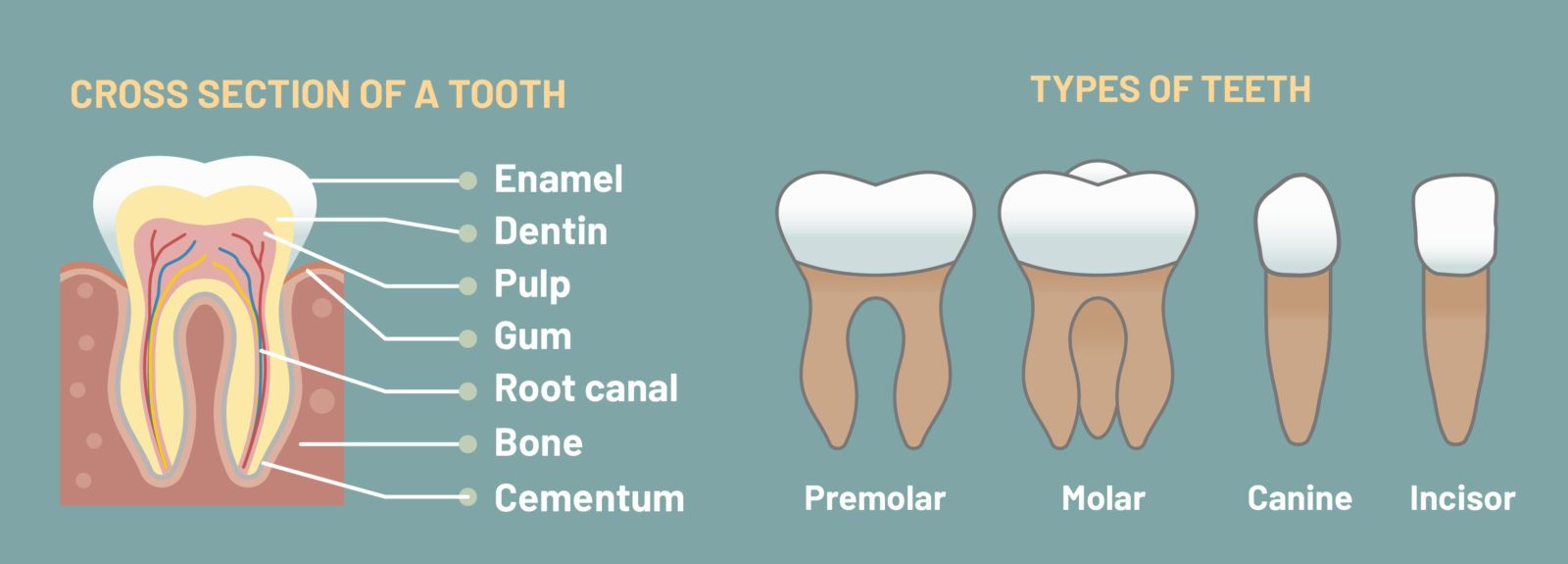What is a Root Canal?
Firstly, what is a root canal? A root canal is a dental procedure to save a severely damaged or infected tooth. The tooth’s compromised pulp is removed from its interior while preserving the natural tooth structure.
The Process Explained: From Diagnosis to Completion
Your dentist starts by taking X-rays to assess the extent of the damage and how many canals are affected (each tooth has 4 canals). Once the area is numbed, your dentist drills a small opening in the tooth to remove the infected pulp from the affected root canals. The canal is then carefully cleaned, disinfected and filled with a rubber-like material to prevent further infection.
To restore its strength, a crown is usually placed over the tooth, helping you maintain your smile and chew with confidence. Think of the process as a deep clean with a new protector, giving your tooth a new lease on life.
Understanding Tooth Extraction
In certain situations, outright tooth extraction may be the best decision for optimal dental health. Where tooth damage is extensive due to decay or trauma, other treatment options, like fillings or crowns, may be ruled out. While drastic, this approach can prevent the spread of infection and alleviate persistent pain.
Types of Tooth Extractions: Simple vs. Surgical
Simple extractions involve removing visible teeth using local anaesthetic. In contrast, surgical extractions may require making incisions in the gum tissue to remove broken or impacted teeth. Your doctor should inform you which is required.
Comparing the Pain: Root Canal vs. Extraction
Despite popular belief, modern root canal procedures usually cause only mild discomfort. In fact, the majority of patients report little to no pain during either a root canal or an extraction.
Pain During the Procedure: What to Expect
Both root canals and tooth extractions are performed under local anaesthetic. In terms of pain levels, most patients report that a root canal treatment feels similar to having a filling done. Extractions may cause more post-procedure discomfort.
Cost Considerations
Root canals generally have a higher initial cost compared to extractions. However, extractions may lead to additional long-term expenses if a gap replacement is needed. For instance, people missing a prominent tooth might prefer a root canal to save the natural tooth and maintain aesthetics. For those with a severely damaged tooth (where saving the root is not possible), extraction becomes more favourable, particularly if the tooth is at the back of the mouth and not immediately visible. When in doubt, discuss the pros and cons of each technique with a dental professional.
Root Canal Costs: What’s Included in the Price?
Root canal costs cover the procedure, temporary filling and final restoration. Extraction costs only cover the extraction of the offending tooth. Private health insurance often provides partial coverage for both options.
Impact on Oral Health and Functionality
Keeping your natural teeth through root canal treatment helps maintain proper bite alignment and prevents neighbouring teeth from shifting.
How a Root Canal Affects Your Teeth
A successfully treated tooth can last a lifetime with proper care. The procedure strengthens the tooth while maintaining natural function and appearance.
Recovery and Aftercare
After undergoing major dental procedures like a root canal or tooth extraction, you can expect mild discomfort for a few days. This is normal and should not be debilitating.
Root Canal Recovery: Timeline and Tips
Remember to:
- Avoid hard foods initially to protect the area and support the healing process.
- Make oral hygiene a priority to prevent any complications.
In most cases, you can look forward to complete healing within a week.
Aesthetic Considerations
Root canals preserve your natural smile. Extractions create gaps that may require costly replacements like bridges or implants.
Maintaining Your Smile: Root Canal vs. Extraction
Root canal treatment lets you keep your natural tooth, maintaining facial structure and smile aesthetics. Extraction might lead to visible gaps unless restored.
Risks and Complications
Both procedures carry minimal risks when performed by qualified professionals. Success rates for root canals exceed 95%.
Potential Risks Associated with Root Canals
Complications are rare but may include reinfection or crack formation. Regular check-ups help monitor treated teeth.
Making the Decision: Root Canal or Extraction?
Choosing between a root canal and an extraction isn’t just a clinical decision, it’s about mapping out your future dental health. Long-term, a preserved tooth might mean avoiding investments in implants or bridges, while extraction could be the better option if there’s considerable decay. Every factor counts, so don’t let cost alone steer you.
Consulting Your Dentist: Key Questions to Ask
After considering the information, it’s important to discuss your specific case with your dentist. Be sure to ask about the success rates, alternative options, recovery time and potential complications. By speaking directly with a professional, you’ll receive personalised advice tailored to your dental health. Don’t delay reaching out – schedule a consultation today to understand what’s best for your smile and your overall well-being.
Choosing Between Root Canal and Extraction
Making the choice is an important decision that can significantly impact your dental health. A root canal often serves as a long-term solution because it allows you to preserve your natural tooth. This can be advantageous for maintaining your normal bite and chewing functions. On the other hand, while extractions might seem appealing for fast relief, they create gaps that can lead to alignment issues or require future costly dental work like bridges or implants to resolve. Ideally, weighing these options with input from your dentist ensures a plan tailored to your unique oral health needs.
Summarising the Key Points: Root Canal vs. Extraction
Choosing between a root canal and an extraction significantly affects your dental health journey. Root canals allow you to retain your natural teeth, although they may have a higher initial cost. Extractions are more straightforward with a lower initial cost, but sometimes require follow-up treatments like implants or bridges.
Discuss these scenarios with your dentist to discover which option aligns best with your dental health needs and lifestyle. If you’re looking for a dental extraction or root canal treatment, you can trust Tandara Dental.










